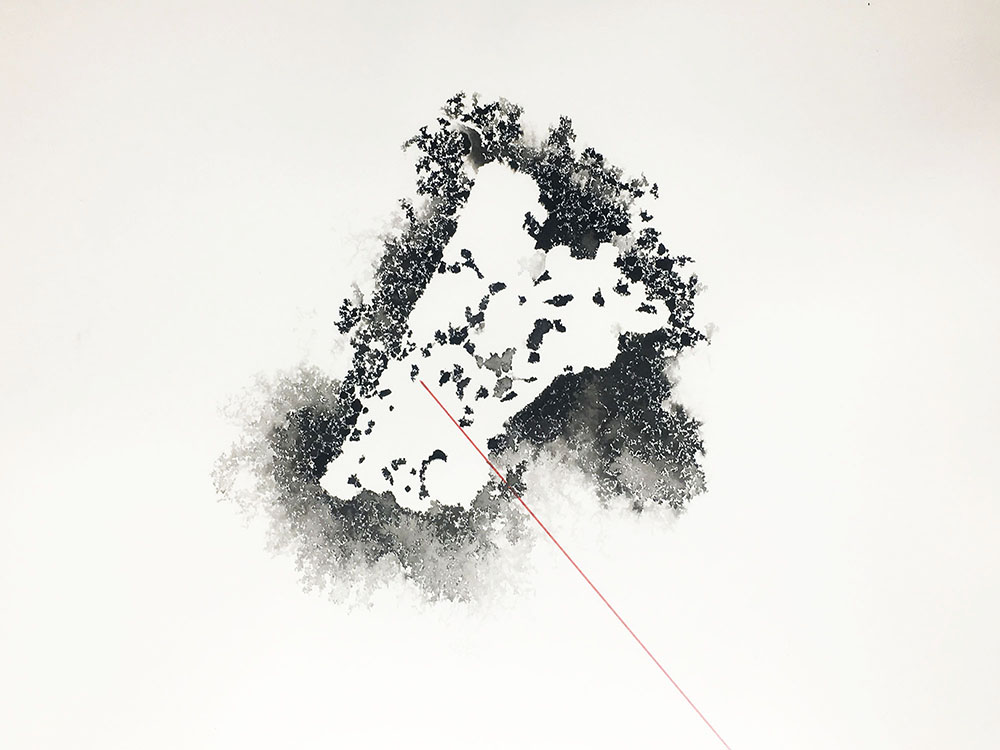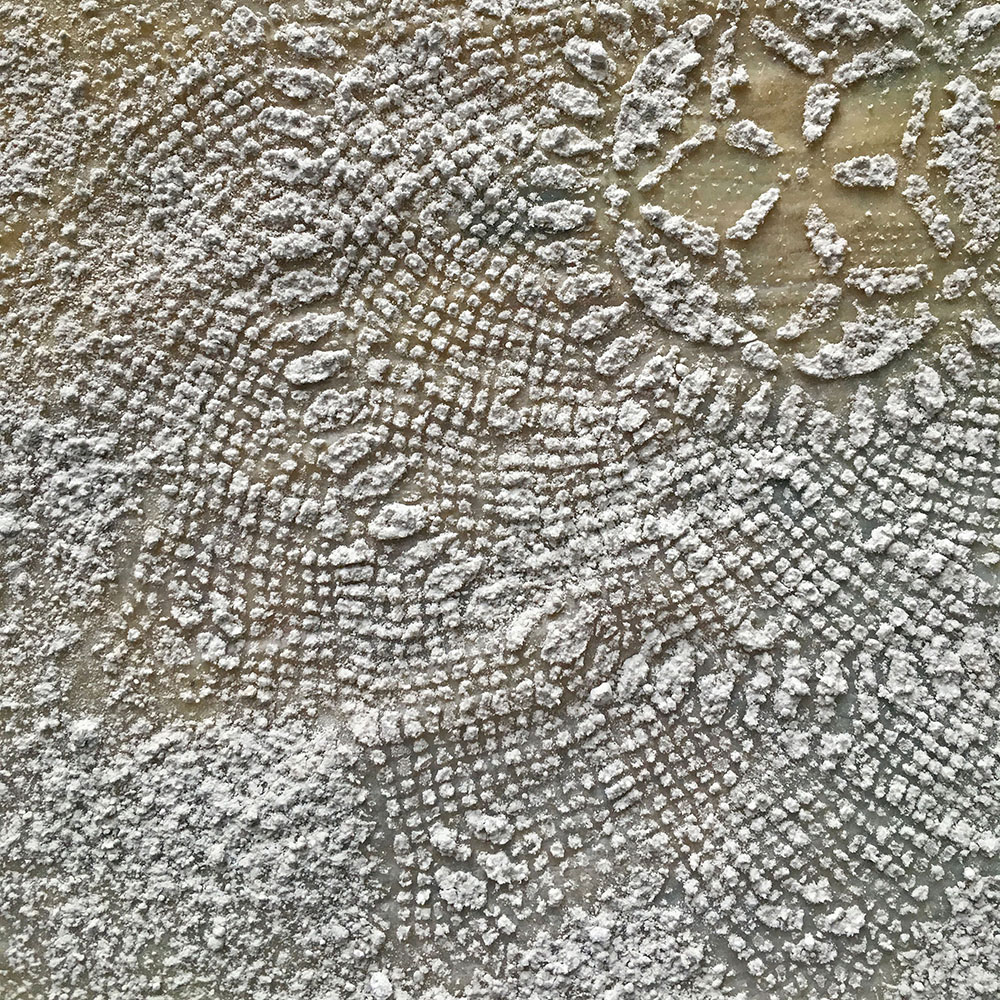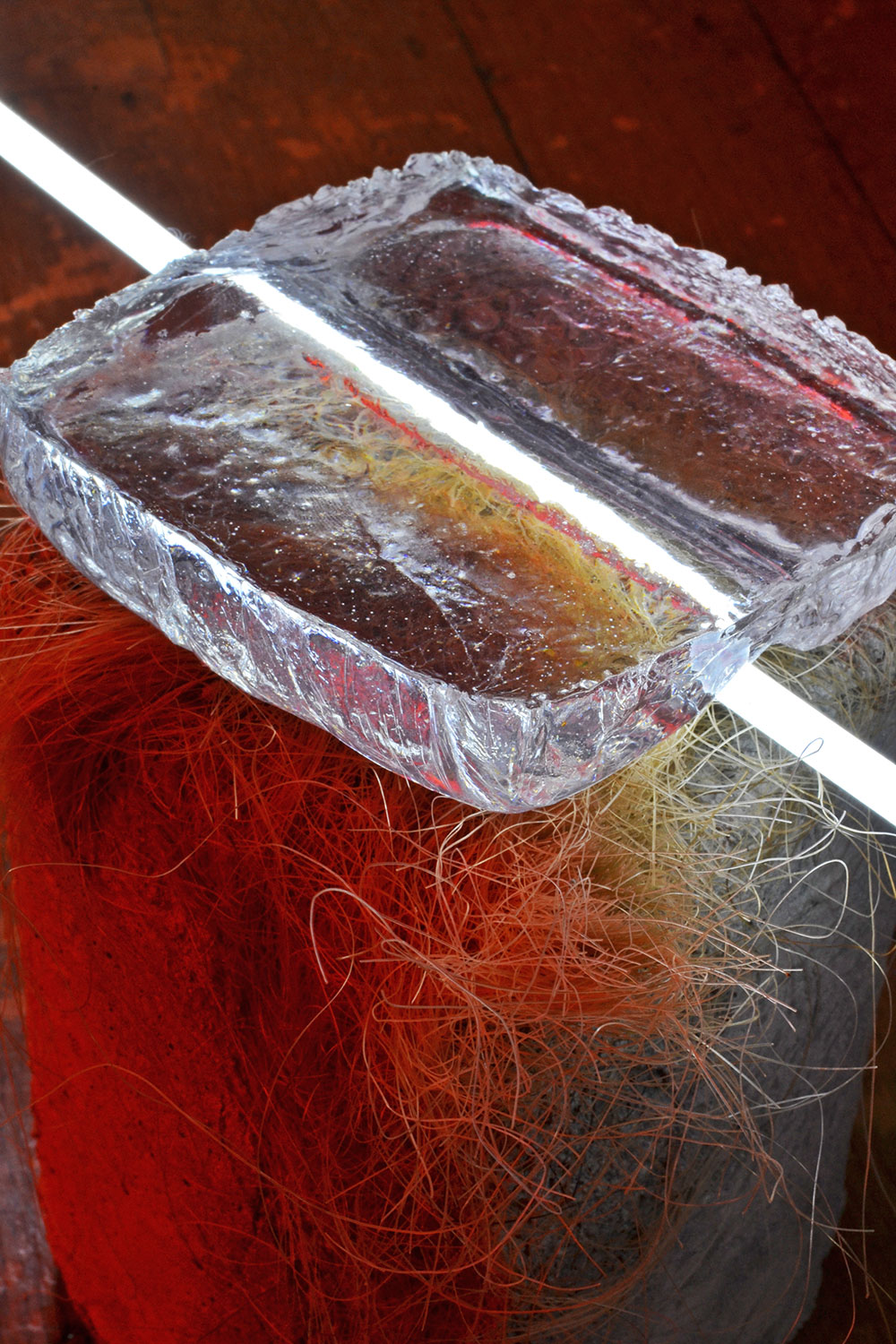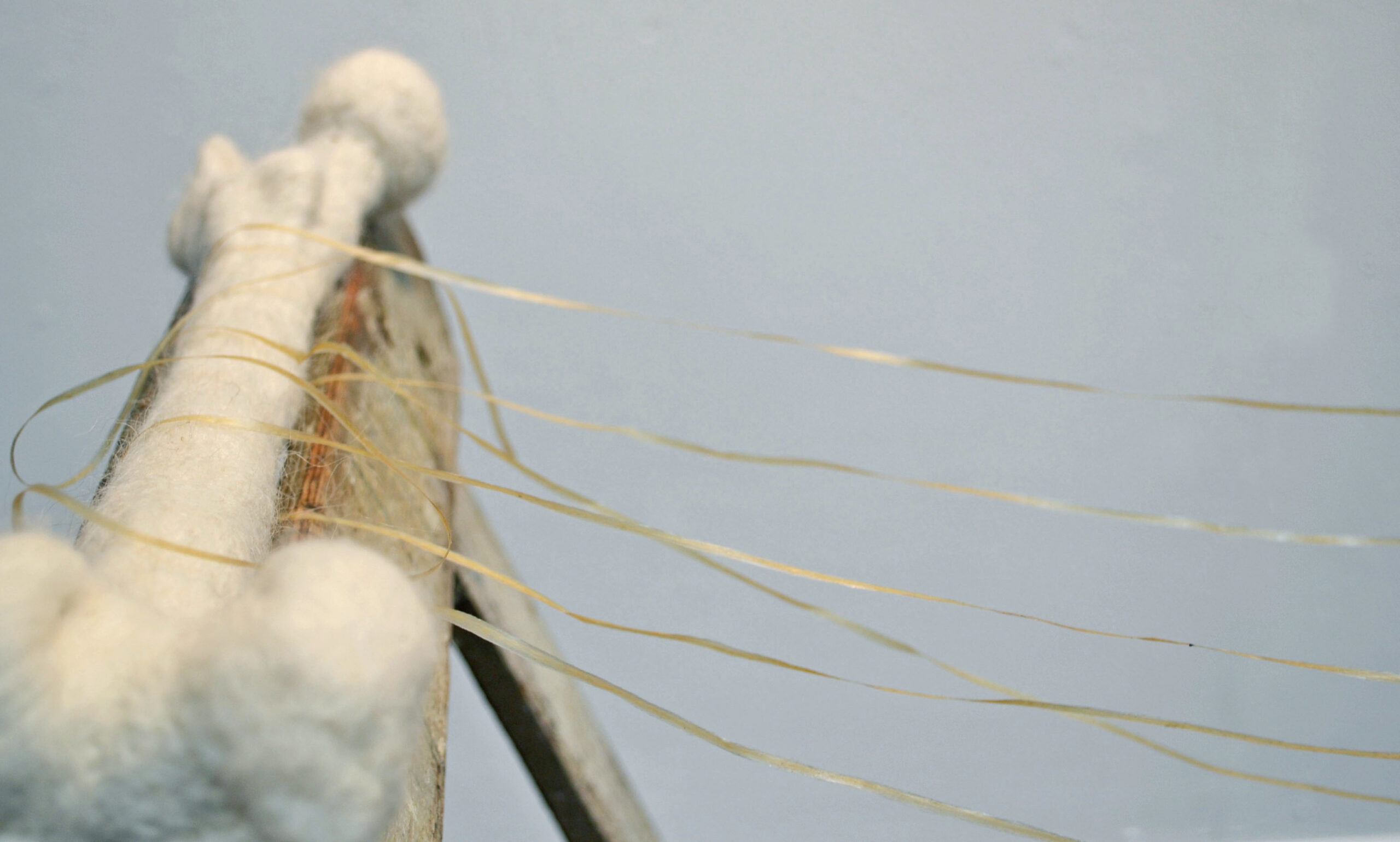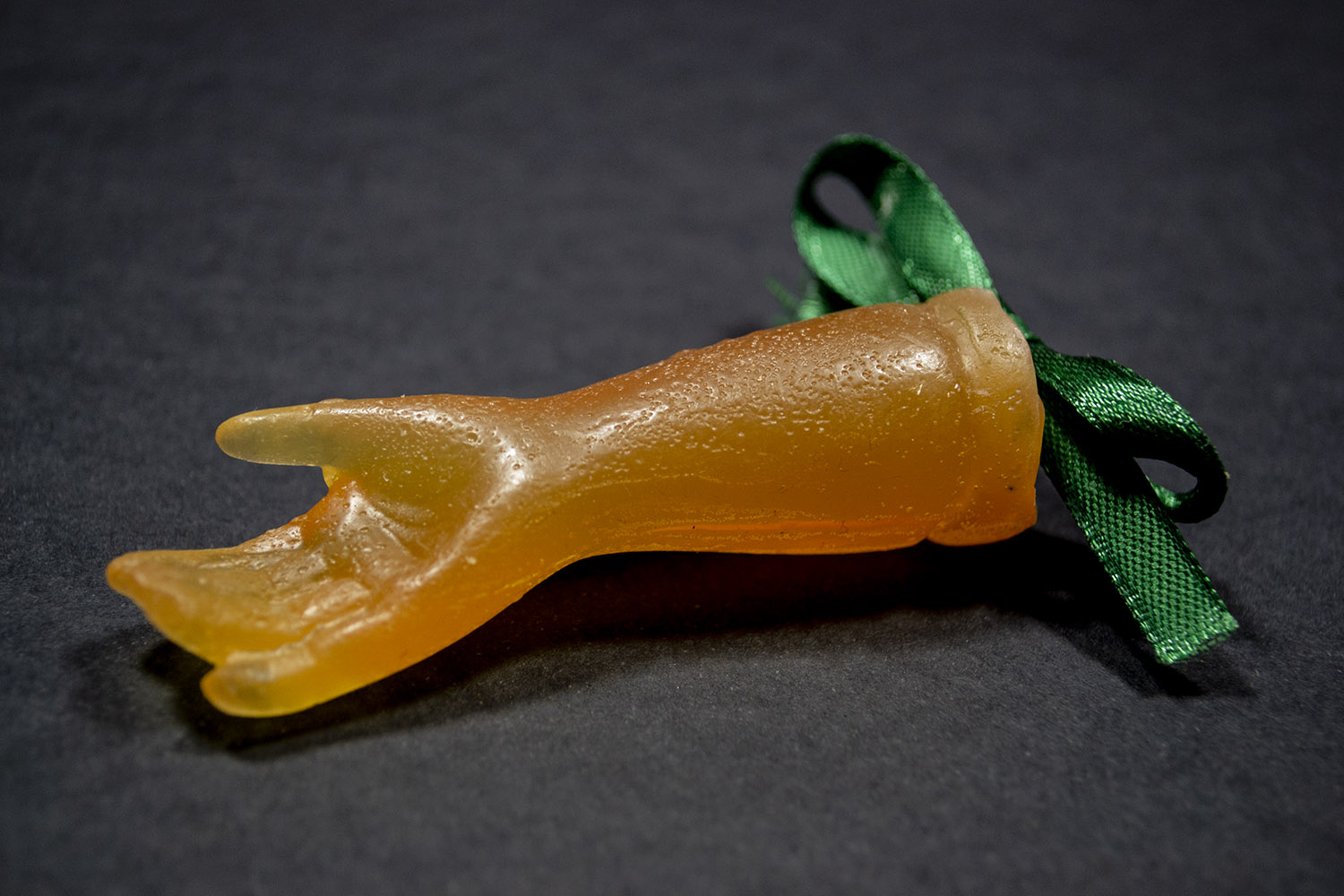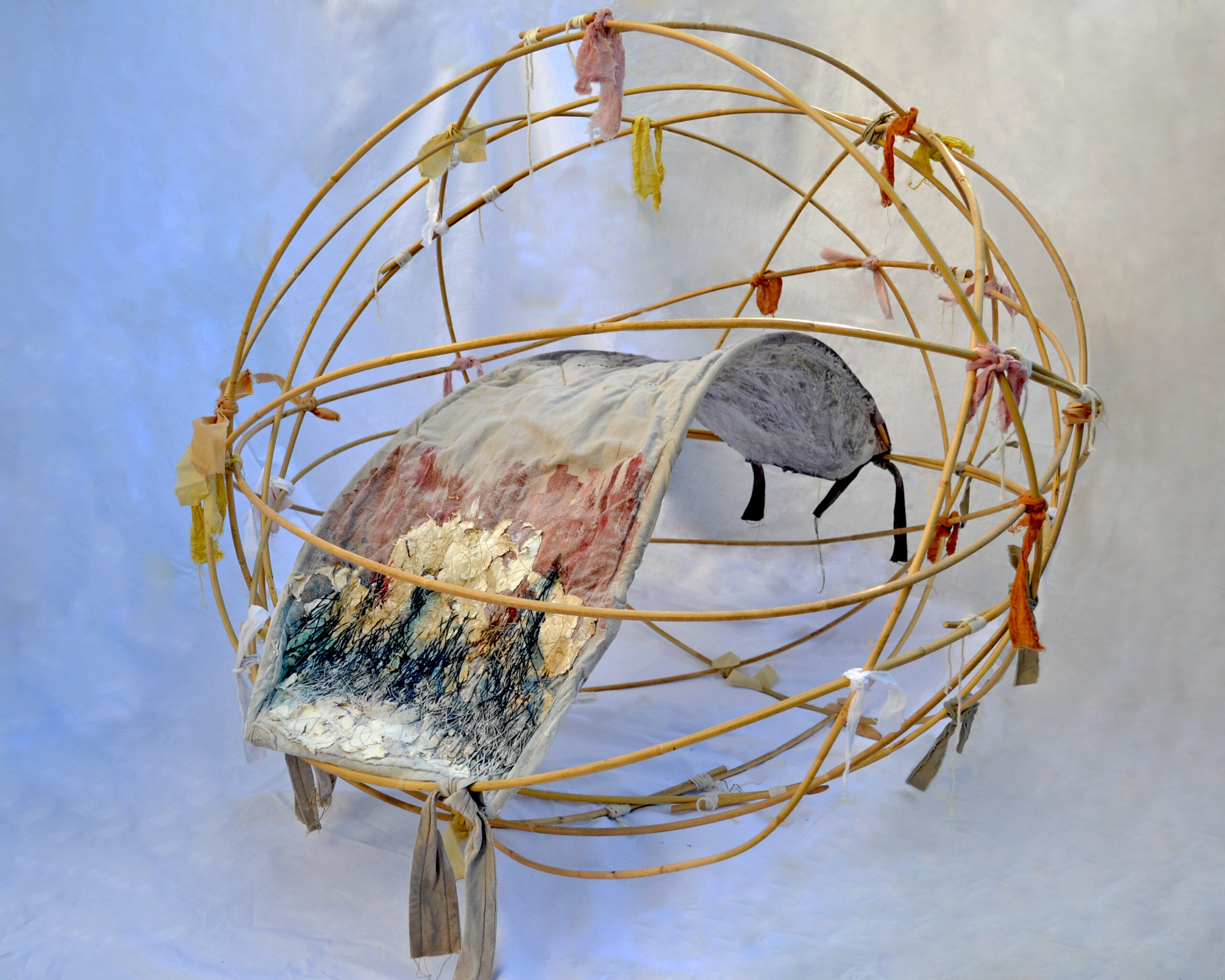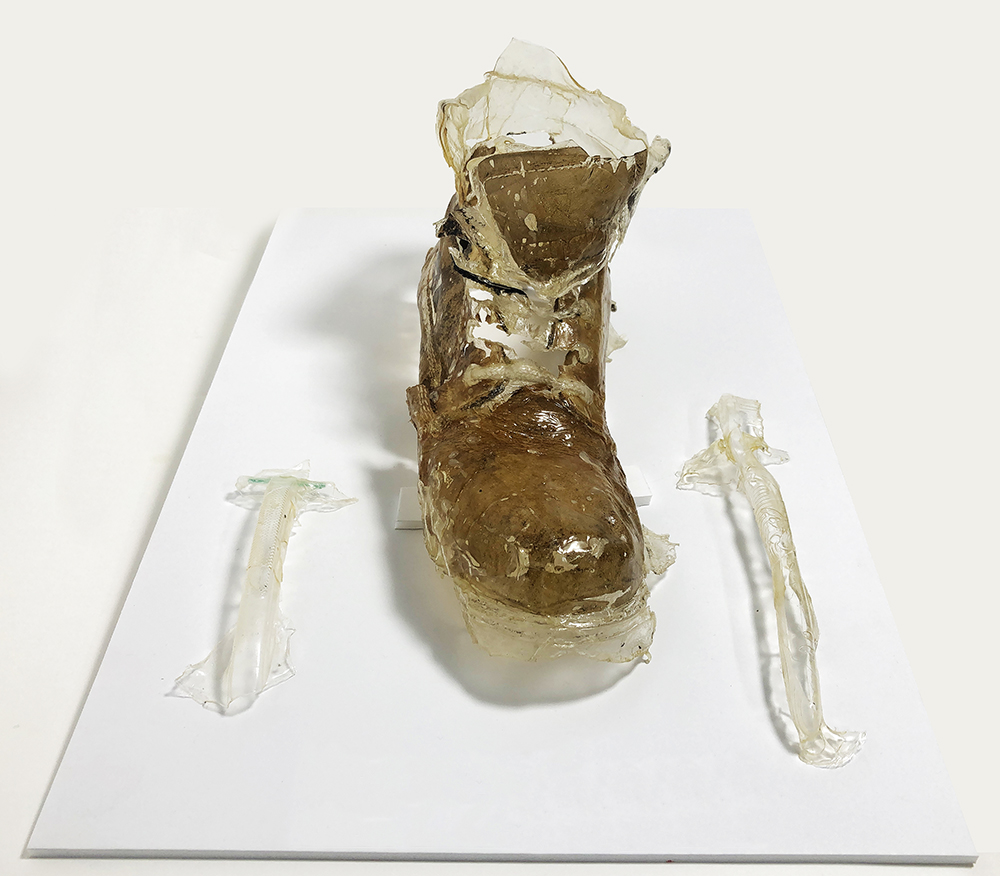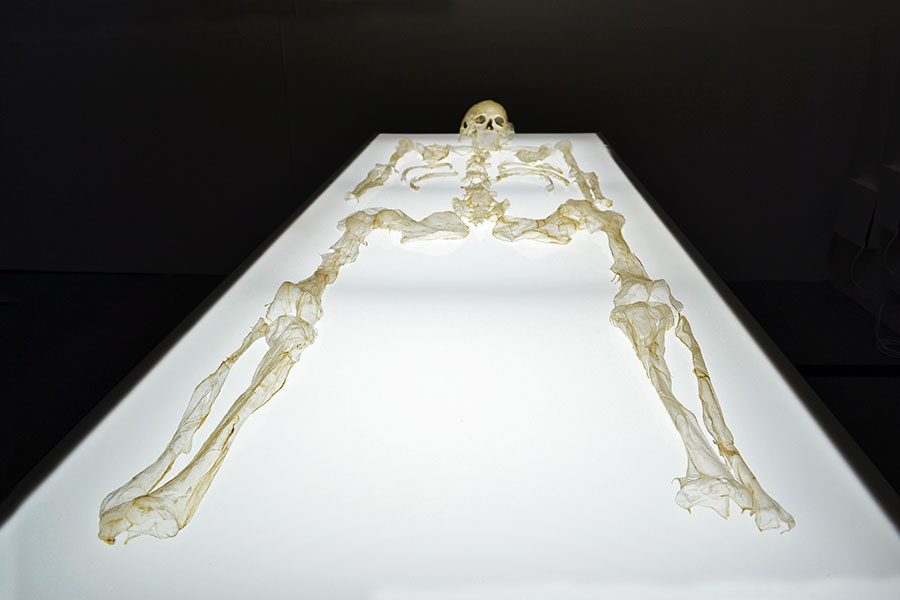Katie Taylor
We Leave a Trace, 2019
Ink halo painting of antique lace 20” x 20”
Visualising the absent present. Exploring how belongings change after the death of someone.
Katie Taylor
Momentary, 2017
Beef casing and bone ash 30cm x 30cm
Fragile memory is delicate and brief, memories only partially remembered, brief glimpses of our past but almost always incomplete.
Katie Taylor
One Hundred and Thirteen, 2013
Found items, concrete, resin, fibre optic cable. 1.5 meter x 1.5 meter
Created as a site specific piece for OVADA's Spotlight 13 in Oxford's Town Hall. The work needed to relate to the Victorian Court rooms. When I visited the rooms I was captivated by the palpable history so I spent some time researching The British News Archives. In the Oxford Journal 24th November 1900 twelve court cases were listed as having been heard at Oxford City Court, these were: 3 drunk and disorderly cases Letting of fireworks in the street Obstruction of a lane with a horse and fish cart Allowing a chimney to catch fire Assaulting wife and knocking her tooth out Begging in the street but beggar claimed to be selling shoe laces Maintenance arrears Cruelty to a horse Cruelty to a cat Items embedded within concrete remind us of each of these cases like archeology the items have been uncovered and preserved to reveal the past, almost forgotten but rediscovered. Similar cases would have been heard week after week, year after year.
Katie Taylor
Divided, 2019
Needle felted wool, Lamb intestines, Trestle legs 1 meter x 1.5 meter
‘Divided’ explores ideas of borders and boundaries as a place of conflict. Separated bones metaphorically reference ideas of unidentified human remains at borders but also other bounded lines, life/death, free movement / restriction, knowledge / ignorance. The felted wool references bone but made from wool they allude to the outside of the body. Lamb casing threads join the separated bones, made from intestines these reference skin, playing with ideas of being inside out or outside in.
Katie Taylor
Covid Amulet, 2020
Glycerine Soap, Green Ribbon 7.5cm x 3cm
Inspired by amulets through history that were thought to give protection against evil, danger, or disease as well as the current advice to wash your hands, I have made the covid amulet as creative protection for the current times. A dolls hand cast in glycerine soap and tied with a green ribbon for balance and harmony.
Katie Taylor
Mental, 2013
Cane, Dyed Cotton, Salt, Paper 1 meter x 1 meter
This project was created to explore the historical treatment of women's mental health. The sphere reminds us that women were incarcerated within asylums very often needlessly, but the sphere is controllable by other people, pushed around and manipulated. The rags are reminiscent of rag trees where family would tie remnants of clothing from people who were sick in the belief that as the rag disintegrates the person would get better. The arched central element is a reference to Charcot's hysterical arch. It is hand dyed with St. johns wort a natural anti depressant and then quilted on one end in a brain pattern with a section from the front torn and removed referencing pre frontal lobotomy's often given to women as a way of calming them. The other end is stitched with paper and hand embroidered with salt crystals grown over the top that remind us of the tears shed. This end was created as a reference to the unclaimed cremation urns from a 19th century asylum that David Maisel photographed.
Katie Taylor
Bound Up Material, 2021
Gelatine Bioplastic 5.5" x 10.5" x 4"
Exploring unidentified human remains by looking at clothing that forensic anthropologists use in the identification of the dead. Shoes embody the idea of transience, the use of gelatine bioplastic directly evidences the fragility of the dead body within the environment and returning it to the soil.
Katie Taylor
Re Group, 2019
Lamb Casings 78″ x 36″
Fragile memory held within remains enable forensic teams to identify individuals after atrocity.
Katie Taylor
Immediate Circle, 2020
Gelatine Bioplastic 10" x 4"
Work that explores 'presence' at the site of unidentified human remains
Katie Taylor
Lie Down, 2017
Cotton Fabric dyed with coffee 300cm x 70cm
Whilst doing research into forensic anthropology I became fascinated with its use in Bosnia to identify individuals within Mass Graves. This piece is a direct response to this research. ?Lie Down? is an exploration of the progression of the war in Bosnia. It is made from hundreds of torn strips of cotton and linen sheets and table cloths knotted together. During the beginning stages of the war in Bosnia, Muslim?s were expected to wear a white arm band and hang a white flag/sheet on their houses to show that they were Muslims. The top section of my piece is made from white strips of cloth. When segregating men from women, boys were selected and separated based on their height. Boys smaller than 150cm were allowed to remain with their mothers whilst those above 150cm had to leave with their fathers and were certainly sent to their death. My piece of work hangs at exactly 150cm. The lower section of the piece is naturally dyed in coffee. Coffee is a strong symbol of community in Bosnia. Before the war, Bosnian citizens would all drink coffee together whether Bosniak (Bosnian Muslim), Serb or Croat. After the war many Bosniaks (Bosnian Muslim) attempted to move back to their homes to find another family had moved in. They were often offered coffee in their own cups. The piece of work extends onto the floor referencing burial / mass graves / shrouds / death, and is titled ?Lie Down?, the last words spoken to many, before being shot. Forensic teams exhumed cloth ligatures and blindfolds across all of the mass grave sites at Srebrenica. These ligatures and blind folds were often from the same fabric source and this evidence was part of the proof for Genocide during the trials at The Hague
